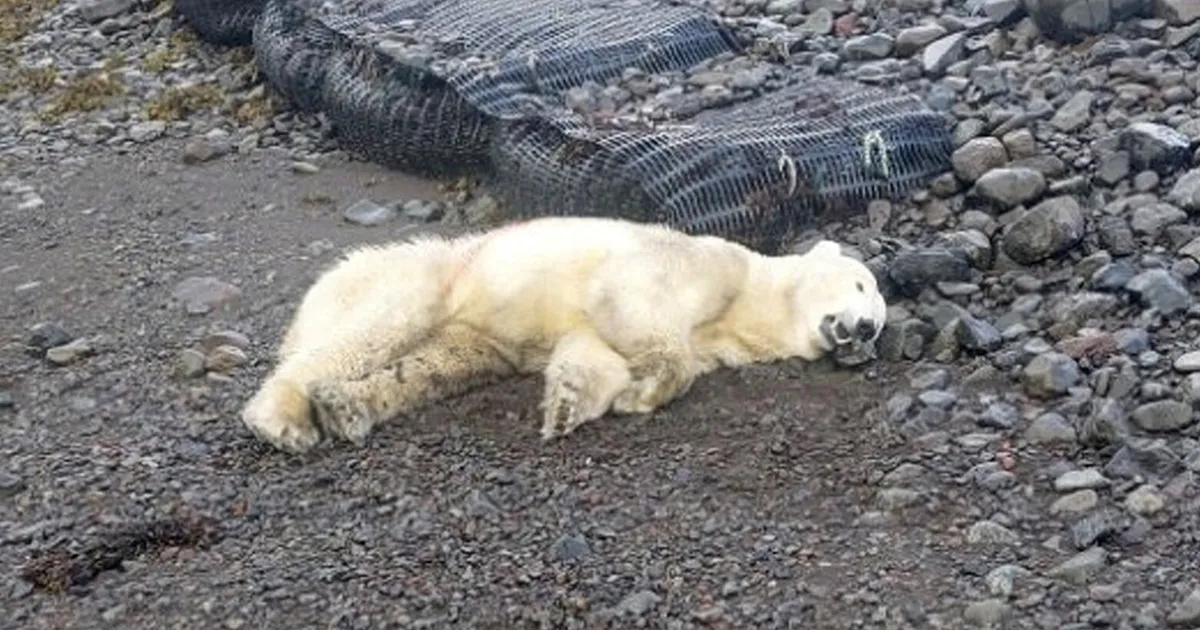A polar bear shot dead by police has stirred significant attention in Iceland, where the sighting of such bears is a rare occurrence.
The incident took place on the northwestern tip of the country, leading to discussions about wildlife management and the broader implications of climate change on these majestic creatures. This event raises questions about the balance between public safety and the conservation of endangered species.
The Incident: Context and Response
On a Thursday in September, police sharpshooters responded to a report from a resident in a remote holiday home in Hofdastrond, located in the Westfjords region.
The resident had spotted the polar bear rummaging through her garbage, prompting her to lock herself inside the upper floor of her home. Concerned for her safety, she contacted the police, who arrived promptly to assess the situation.
Westfjords Police Chief Helgi Jensson commented on the difficult decision made by the police, stating, “It’s not something we like to do.” The close proximity of the bear to the summer house created a pressing need for action.
Read : NASA Chooses Iceland as Training Ground for Artemis II Mission
The bear’s presence posed a potential threat not only to the resident but also to the local community. With the bear being reported so close to human habitation, the police faced a dilemma: act to protect the resident or risk a potentially dangerous encounter.
After consultations with the Environment Agency, authorities decided that the bear could not be safely relocated. They concluded that sedating the bear and transporting it back to Greenland was not a feasible option, given the costs involved and the likelihood of Danish authorities denying permission for its return.
Thus, the bear was shot, a decision that reflects the challenges faced by wildlife managers when dealing with such rare encounters.

Understanding Polar Bear Migration Patterns
The polar bear involved in this incident is believed to have traveled from Greenland, potentially aided by drifting icebergs. This journey is remarkable, considering the distances involved and the bear’s ability to navigate treacherous waters.
The last recorded sighting of a polar bear in Iceland occurred in 2016, making this event particularly noteworthy. Sightings of polar bears have been infrequent in recent years, highlighting the potential impacts of climate change on their traditional habitats.
As the Arctic ice melts, polar bears are forced to adapt to shifting environments. They often travel greater distances in search of food and suitable habitats, sometimes leading them closer to human settlements.
This migration poses risks not only to the bears but also to the communities they encounter. The decision to kill the bear rather than attempt relocation underscores the complex challenges of managing wildlife in a changing climate.
The environmental conditions affecting polar bear migration are influenced by a combination of factors, including rising global temperatures and changing ice patterns.
As ice caps shrink, polar bears struggle to find seals, their primary prey, leading to increased competition and the need to search for alternative food sources. These shifts in behavior may drive them into more populated areas, resulting in encounters with humans.
The police response to the incident reveals the necessity for clear strategies in wildlife management, particularly as climate change continues to reshape animal behaviors. Creating a framework that prioritizes both public safety and animal welfare is essential for mitigating risks associated with human-wildlife interactions.
Future Considerations for Wildlife Management
The tragic outcome of this incident brings to light the urgent need for effective wildlife management strategies in the face of climate change. As polar bears and other wildlife adapt to new conditions, authorities must implement comprehensive plans to ensure the safety of both human populations and the animals themselves.
Key considerations for wildlife management include enhancing public education about polar bear behavior, developing emergency response protocols for sightings, and investing in technologies for monitoring wildlife movement.
Community engagement plays a crucial role in fostering understanding and cooperation between residents and wildlife managers.

Furthermore, collaboration among local governments, environmental agencies, and conservation organizations is vital for developing strategies that address the underlying issues driving polar bear migration.
Efforts to mitigate climate change and its impacts on polar bear habitats should be prioritized, alongside initiatives that promote coexistence between humans and wildlife.
In light of the growing challenges posed by climate change, it is imperative to recognize the interconnectedness of human activities and wildlife conservation. Developing sustainable practices that minimize habitat disruption and promote environmental stewardship is essential for protecting vulnerable species like polar bears.
In conclusion, the polar bear shot dead by police in Iceland after eight years serves as a poignant reminder of the complexities surrounding wildlife management in a changing world. As polar bears venture farther from their traditional habitats, it is crucial to strike a balance between ensuring public safety and safeguarding these endangered animals.
Proactive measures in wildlife management, alongside broader efforts to combat climate change, will be necessary to navigate the challenges ahead.
let’s enjoy few years on earth with peace and happiness….✍🏼🙏

